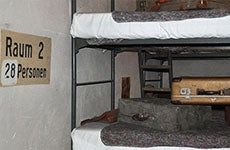
Sachsenhausen Concentration Camp
Sachsenhausen is a death camp near Berlin and is considered one of the most important from Nazi Germany. It is a must-see visit if you’re in Berlin for a few days.
The Sachsenhausen Concentration Camp was designed by the SS architects and founded in 1936 by prisoners from the Emsland camps. It was conceived as a model extermination camp, where the ideas of National Socialism were to be projected and the SS could subject their power to the convicts.
Camp History
Between 1936 and 1945 over 200,000 prisoners were locked away in the camp. The first people sent to the Death Camp were political opponents of the Nazi regime. However, in the following years, the Nazis put away anyone they believed to be racially or biologically inferior.
Thousands of prisoners died due to illnesses, forced labour and starvation. Many others were victims of the SS extermination techniques.
At the end of the war, on 22 and 23 April 1945, the Soviet and Polish soldiers freed over 3,000 suffering prisoners, nurses and doctors.
From Concentration Camp to Soviet Special Camp
In August 1945, Sachsenhausen became a Soviet Special Camp. Three months after World War II ended, when Europe was finally free from the intimidation of the Nazis, the Soviet secret service moved the Soviet Special Camp No. 7 to Sachsenhausen.
The Camp was used to lock Nazi prisoners and political prisoners who did not agree with the Soviet Union ideals and other many who were arbitrarily detained.
The special camp became the largest in the area until it was dismantled in 1950.
Approximately 60,000 prisoners were held in the camp of which 12,000 died.
In 1961, it was inaugurated as a National Memorial by the People’s National Army of the G.D.R. and the People’s Police.
Exploring Sachsenhausen
During the visit to the Concentration Camp, you will visit all the areas that were most used by the Nazis and Soviets. As you discover the facility, you’ll find out about the atrocities committed by both parties in the large death camp.
Some of the most relevant areas are the following:
- Barrack 38: Located in the “Small Camp” area, Barrack 38 is where the Nazis would cram the Jews together between 1938 and 1942. Barrack 38 is a museum that reflects the life of Jewish prisoners at the Camp. You’ll notice that it still smells burnt as it was set fire to by anti-Semites in 1992.
- Prison: The Gestapo used these blocks to lock up those who tried to escape the Camp or prominent figures. The prisoners were tortured and killed without any mercy.
- Infirmary Barracks: In Sachsenhausen, like in other death camps, prisoners were used for medical experiments, for example by sterilizing them or killing the weakest captives.
A Moving Experience
The Sachsenhausen Concentration Camp will not leave any of its visitors indifferent. While you explore the death camp and its barracks, you’ll come face to face with the horrific conditions the prisoners were subject to. The grimmest parts include the Infirmary Barracks, where many women and men were subjected to terrible experiments, and the patio, where the detainees were made to queue for hours either in the cold or in the scorching heat.
Guided Tours
Although it is not necessary to book a guided tour of many of Berlin's landmarks, we strongly suggest you join a guided tour of Sachsenhausen. Most of the buildings of the Death Camp are no longer standing and most of the facilities are empty, so you won't get a good idea of the terrible past of this concentration camp without a professional guide.
If you want to book a tour around the Sachsenhausen concentration camp, you can do so below:
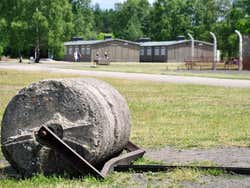
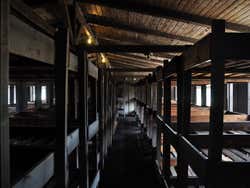
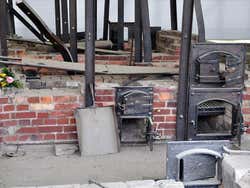
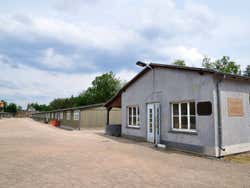
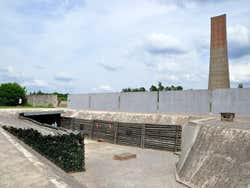
Schedule
Summer hours: Every day from 8:30 a.m. to 6:00 p.m.
Winter hours: Every day from 8:30 a.m. to 4:30 p.m.
Price
Entrance: free
Audio guide: € 3.50 (US$ 4.07)
Sachsenhausen Concentration Camp Tour € 25 (US$ 29.11)
Transport
Train: Oranienburg, lines RE5, RB12 and S1
You can either walk 20 minutes from the Train Station or take the bus 804
Nearby places
Berlin Tegel Airport (22.9 km) Berliner Unterwelten (25.4 km) Hamburger Bahnhof in Berlin (27.2 km) Charlottenburg Palace (27.3 km) Berggruen Museum in Berlin (27.5 km)

